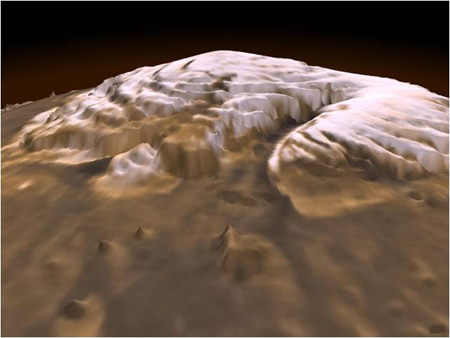Using Ice-surface Topography and Internal Layers to Infer
Past Ice-flow Rates and Past Mass Balance on Mars
By:
Michelle Koutnik
Earth & Space Sciences
University of Washington
When: |
Friday, January 29, 2010, 10:30 a.m. to 11:30 a.m. |
Where: |
Seminar Conference Room, 10100 Burnet Road, Bldg 196-ROC, Austin, Texas 78758 |
Host: |
Jack Holt, UTIG |
Abstract
A flowing ice mass has a predictable shape, and therefore the shape of an
ice surface can be informative about the history of ice flow. While
present-day ice flow is insignificant on Mars, the shape of the present-day
ice-surface topography over at least a portion of the Martian North Polar
Layered Deposits can be well-reproduced using an ice-flow model; this is
strong evidence for a past era of significant ice flow on Mars. For any ice
mass, the ice-flow rate depends on the mass-balance rate and on the
near-basal ice temperature and any flow enhancement due to impurities in the
ice or variations in the physical properties of the ice.
We use the shape of the relict Martian ice-surface topography to infer
characteristics of past ice temperatures, or past climate conditions, in
which ice-flow rates on Mars would have been more significant than today.
In addition, radar-observed internal layers contain detailed information
about the history of the Martian polar layered deposits. We show that for a
given ice-flow history, the internal-layer shapes can be informative about
the mass-balance history.





